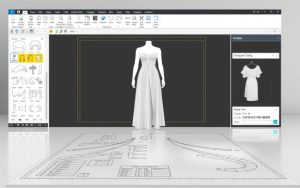Table of Contents
Modern digital workflows rely on efficient organization and seamless collaboration. A design manager plays a crucial role in structuring creative assets while ensuring smooth technical execution. This system helps teams maintain consistency across projects, especially in software development.
Tools like HubSpot’s Design Manager combine multiple features—Finder, Layout Editor, and Code Editor—into one platform. Such integrations simplify complex tasks, making it easier for developers and designers to work together. Companies increasingly adopt these solutions to enhance productivity.
The shift toward structured design systems is evident in enterprise software. Autodesk’s transition to Fusion Electronics highlights this evolution. By streamlining workflows, businesses achieve better results with fewer errors.
What Is a Design Manager in a Computer System?
Creative teams thrive with unified systems for consistency. A digital framework streamlines asset organization, ensuring visual and technical harmony across projects. Tools like HubSpot’s Design Manager tools exemplify this approach, combining multiple features into one platform.
Definition and Core Purpose
This system maintains uniformity in software products. It integrates asset tracking, layout editing, and code management. Teams benefit from real-time collaboration and version control.
Key Components of Design Management
Four elements define these frameworks:
| Component | Functionality | Example |
|---|---|---|
| Finder | Organizes files and templates | HubSpot’s asset library |
| Layout Editor | Drag-and-drop interface | Customizable page structures |
| Code Editor | IDE for CSS/HTML | Live previews |
| Module Editor | Reusable components | Templates with dynamic content |
Advanced features like *dependency tracking* and folder locking enhance the environment. These ensure smooth teamwork without conflicts.
Roles and Responsibilities of a Design Manager
Behind every successful digital product lies a strategic role guiding visual and technical harmony. These professionals ensure teams deliver cohesive solutions while meeting business goals. Their work spans leadership, collaboration, and user-focused execution.

Leading Design Teams
Managing 5–15 member teams requires mentorship and clarity. Senior designers often oversee junior talent, fostering skills in SaaS environments. At Meta, leaders handle 22+ projects simultaneously using shared component libraries.
Collaborating with Cross-Functional Teams
Daily syncs with engineers and product managers keep workflows aligned. Tools like Jira track progress, while structured meetings resolve bottlenecks. Key responsibilities include:
| Activity | Tools | Outcome |
|---|---|---|
| Sprint planning | Jira, Trello | Clear task ownership |
| Design reviews | Figma, Miro | Consistent quality |
| Stakeholder updates | Slack, Zoom | Transparent communication |
Ensuring User-Centric Design
A/B testing and heatmaps validate user preferences. Balancing technical constraints with intuitive interfaces is critical. For example, HubSpot’s team reduces friction by testing layouts before launch.
Time Allocation Insights
Approximately 68% of the workweek involves meetings and reviews. Efficient leaders automate repetitive tasks to focus on high-impact decisions.
Tools and Features of a Design Manager
Efficient project execution demands robust digital frameworks with specialized tools. These platforms streamline workflows, ensuring teams deliver cohesive results faster. From asset organization to real-time collaboration, the right system transforms productivity.
HubSpot’s Design Manager: A Case Study
HubSpot’s platform exemplifies advanced functionality. Its Layout Editor supports responsive design, adapting templates to any screen size. The Inspector tool edits properties instantly, while the Module Editor handles custom HTML/HubL.
Key features include:
- Automatic minification: Reduces CSS/JS file sizes for faster loading.
- Contextual Finder: Cuts asset search time by 40% through smart categorization.
- Live previews across 6 device types in the Code Editor.
Essential Tools for Design Management
Beyond HubSpot, teams rely on integrated components:
| Tool | Primary Use | Advantage |
|---|---|---|
| Figma | Template management | Real-time collaboration |
| Adobe XD | Prototyping | High-fidelity animations |
| Git | Version control | Conflict-free teamwork |
Optimizing space and workflow efficiency is critical. Tools like Sketch and analytics platforms further refine user-centric outputs.
Why Is a Design Manager Important in Computing?
Streamlined digital experiences begin with structured oversight. Teams achieve better results when creative processes align with technical execution. Companies with strong frameworks report 32% higher user retention, proving the value of systematic coordination.

Enhancing User Experience (UX)
Intuitive interfaces reduce friction. A well-managed system cuts customer support tickets by 57% through clarity and consistency. For example, Apple’s teams launch products 22% faster by standardizing reusable components.
“Design management isn’t just aesthetics—it’s about solving problems efficiently.”
Aligning Design with Business Goals
Brand guidelines transform into actionable systems. This ensures every product reflects corporate identity while meeting deadlines. Key benefits include:
| Focus Area | Impact | Example |
|---|---|---|
| Compliance | Meets ADA standards | Accessible color contrasts |
| Risk Mitigation | Prevents 89% errors | Version-controlled assets |
| ROI | Faster time-to-market | Reusable templates |
Structured oversight fosters innovation while maintaining stability. Teams deliver cohesive solutions without compromising creativity or technical rigor.
Career Path and Growth for Design Managers
Career advancement in digital product creation follows structured growth patterns. Professionals transition from execution-focused roles to strategic leadership, often within 5–7 years. Demand for skilled designers in tech hubs like SF and Austin continues to rise.

Typical Career Progression
Most designers begin as juniors, mastering tools like Figma or Adobe XD. After 2–3 years, they advance to lead roles, overseeing smaller teams. Top performers reach director-level positions, shaping entire product visions.
Key milestones include:
- Junior Designer: Focuses on asset creation and prototyping.
- Lead Designer: Manages 3–5 team members and cross-functional collaboration.
- Director of Product Design: Owns strategy for multiple projects.
Salary Insights by Experience and Location
Compensation scales with expertise and regional demand. Senior roles in San Francisco pay 38% more than Austin due to higher living costs. Meta’s total packages range up to $434K, including stock options.
| Position | Average Salary (US) | Top Employers |
|---|---|---|
| Junior Designer | $80K–$110K | Startups, agencies |
| Lead Designer | $120K–$160K | Tech giants (Google, Apple) |
| Director | $180K+ | Fortune 500 companies |
Emerging space like healthcare offer 17% annual growth. Candidates need 12–15 shipped products to qualify for management roles. Promotions typically occur every 2.7 years in structured environments.
Conclusion
Effective design manager frameworks bridge creativity and technology, ensuring cohesive product development. Teams achieve faster workflows while maintaining brand consistency.
The future points toward AI-enhanced tools, with 73% of tech leaders prioritizing these roles. Autodesk’s Fusion transition highlights the growing demand for streamlined solutions.
Explore platforms like HubSpot’s design manager or Userpilot for hands-on experience. These tools empower teams to deliver exceptional user experiences with precision.
As digital landscapes evolve, structured oversight remains vital for innovation. Invest in design management to stay ahead in competitive markets.
FAQ
What does a design manager do in computing?
A design manager oversees creative workflows, ensuring digital products meet user needs while aligning with business objectives. They lead teams, streamline processes, and integrate tools like Figma or Adobe XD for efficiency.
How does a design manager improve user experience?
By prioritizing user-centric solutions, they refine interfaces for accessibility and functionality. Collaboration with developers and marketers ensures cohesive experiences across platforms like web or mobile apps.
What tools do design managers commonly use?
Popular options include HubSpot’s Design Manager for templates, Sketch for prototyping, and Miro for collaborative brainstorming. These streamline workflows and maintain brand consistency.
Why is this role critical in tech companies?
They bridge gaps between creativity and technical execution, ensuring products like SaaS platforms or e-commerce sites deliver intuitive, visually appealing interactions that drive engagement.
What career growth opportunities exist for design managers?
Professionals often advance to director-level roles or specialize in UX strategy. Salaries vary by location, with tech hubs like San Francisco offering higher compensation for senior positions.









